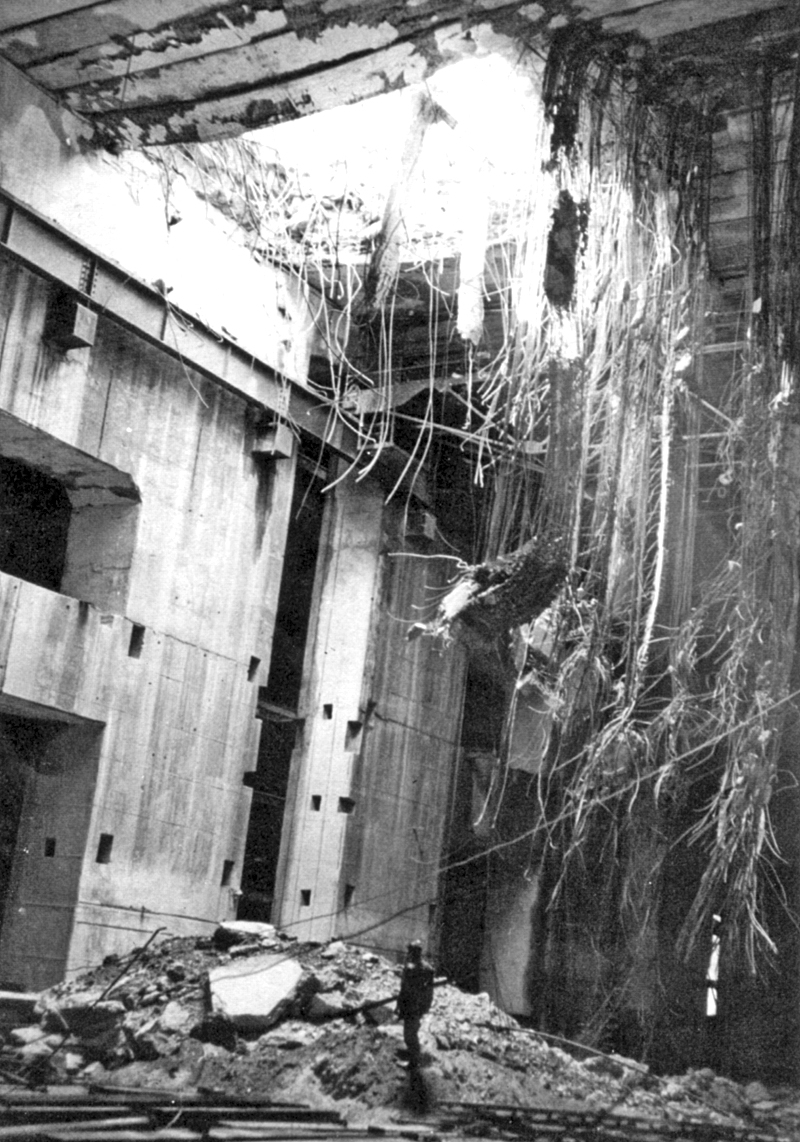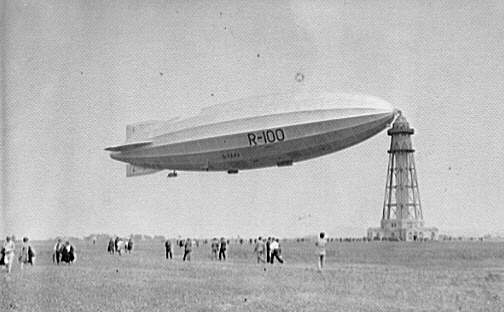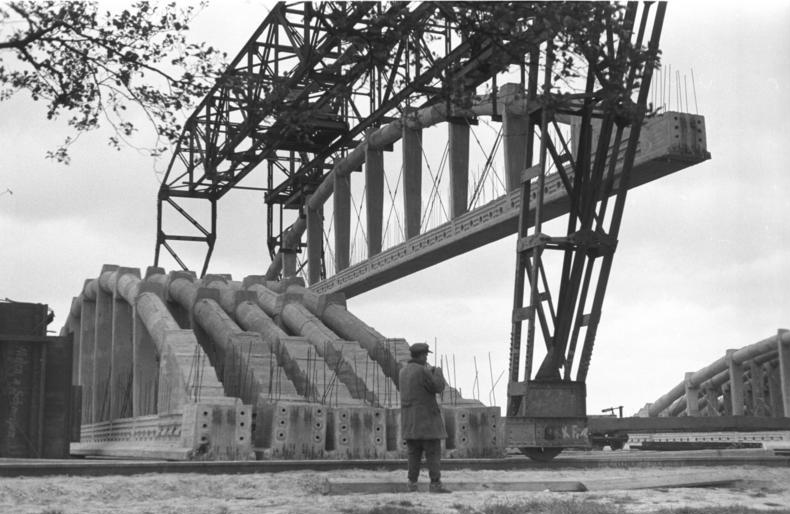|
Bunker-buster
A bunker buster is a type of munition that is designed to penetrate hardened targets or targets buried deep underground, such as military bunkers. Armor piercing shells Germany Röchling shells were bunker-busting artillery shells, developed by the German engineer August Cönders, based on the theory of increasing sectional density to improve penetration. They were tested in 1942 and 1943 against the Belgian Fort d'Aubin-Neufchâteau. Aircraft delivered bombs World War II Germany In World War II the Luftwaffe developed a series of unguided rocket-propelled armor-piercing bombs for use against shipping and fortifications. United Kingdom In World War II, the British designer Barnes Wallis, already famous for inventing the bouncing bomb, designed two bombs that would become the conceptual predecessors of modern bunker busters: the five tonne Tallboy and the ten tonne Grand Slam. These were "Earthquake" bombs—a concept he had first proposed in 1939. The designs were v ... [...More Info...] [...Related Items...] OR: [Wikipedia] [Google] [Baidu] |
GBU-28
The GBU-28 is a 5,000-pound (2,268 kg) class laser-guided "bunker busting" bomb produced originally by the Watervliet Arsenal, Watervliet, New York. It was designed, manufactured, and deployed in less than three weeks due to an urgent need during Operation Desert Storm to penetrate hardened Iraqi command centers located deep underground. Only two of the weapons were dropped in Desert Storm, both by F-111Fs. One GBU-28 was dropped during Operation Iraqi Freedom. The Enhanced GBU-28 augments the laser-guidance with inertial navigation and GPS guidance systems. Design and development In August 1990, the U.S. military began planning an air offensive campaign against Iraq. Planners noticed that a few command and control bunkers in Baghdad were located deep underground to withstand heavy fire. Doubts were raised about the ability of the BLU-109/B to penetrate such fortified structures, so the US Air Force Air Armament Division at Eglin Air Force Base, Florida was asked to cr ... [...More Info...] [...Related Items...] OR: [Wikipedia] [Google] [Baidu] |
Barnes Wallis
Sir Barnes Neville Wallis (26 September 1887 – 30 October 1979) was an English engineer and inventor. He is best known for inventing the bouncing bomb used by the Royal Air Force in Operation Chastise (the "Dambusters" raid) to attack the dams of the Ruhr Valley during World War II. The raid was the subject of the 1955 film '' The Dam Busters'', in which Wallis was played by Michael Redgrave. Among his other inventions were his version of the geodetic airframe and the earthquake bomb. Early life and education Barnes Wallis was born in Ripley, Derbyshire, to Charles William George Robinson Wallis (1859–1945) and his wife Edith Eyre Wallis née Ashby (1859–1911). He was educated at Christ's Hospital in Horsham and Haberdashers' Aske's Hatcham Boys' Grammar School in southeast London, leaving school at seventeen to start work in January 1905 at Thames Engineering Works at Blackheath, southeast London. He subsequently changed his apprenticeship to J. Samuel White's ... [...More Info...] [...Related Items...] OR: [Wikipedia] [Google] [Baidu] |
Earth Quake Bomb
The earthquake bomb, or seismic bomb, was a concept that was invented by the British aeronautical engineer Barnes Wallis early in World War II and subsequently developed and used during the war against strategic targets in Europe. A seismic bomb differs somewhat in concept from traditional bombs, which usually explode at or near the surface, and destroy their target directly by explosive force. In contrast, a seismic bomb is dropped from high altitude to attain very high speed as it falls and upon impact, penetrates and explodes deep underground, causing massive caverns or craters known as ''camouflets'', as well as intense shockwaves. In this way, the seismic bomb can affect targets that are too massive to be affected by a conventional bomb, as well as damage or destroy difficult targets such as bridges and viaducts. Earthquake bombs were used towards the end of World War II on massively reinforced installations, such as submarine pens with concrete walls several meters thick, c ... [...More Info...] [...Related Items...] OR: [Wikipedia] [Google] [Baidu] |
August Cönders
August Cönders was a German engineer working for Röchling'sche Eisen und Stahlwerke GmbH during World War II after having worked in the UK and in Putaux, France, before the war. He designed the Röchling shell that was tested in 1942 and 1943 against the Belgian Fort d'Aubin-Neufchâteau and the V-3 cannon The V-3 (german: Vergeltungswaffe 3, ("Vengeance Weapon 3") was a German World War II large-caliber gun working on the multi-charge principle whereby secondary propellant charges are fired to add velocity to a projectile. The Germans pla .... Very little is known of his life after the V-3 project. References External links August Coenders' 9x19mm Belt-Fed MG {{DEFAULTSORT:Conders, August Engineers from Saarland Weapon designers Possibly living people Year of birth missing ... [...More Info...] [...Related Items...] OR: [Wikipedia] [Google] [Baidu] |
Valentin Submarine Pens
The Valentin submarine factory is a protective shelter on the Weser River at the Bremen suburb of , built to protect German U-boats during World War II. The factory was under construction from 1943 to March 1945 using forced labour, but was damaged by air-raids and unfinished by the end of the war. The Valentin factory was the largest fortified U-boat facility in Germany, and was second only to those built at Brest in France. As a manufacturing facility, it differed from conventional U-boat pens, which were designed to house and service operational U-boats. Construction Production of U-boats by German shipyards had been dramatically reduced as a result of bombing by the Royal Air Force and the United States Army Air Forces, necessitating the creation of bomb-proof production sites. Many such sites were in use in 1944, including the U-boat pen ''Nordsee III'' on the German island of Helgoland, ''Fink II'' and ''Elbe II'' in Hamburg and ''Kilian'' in Kiel. Other sites in Germany a ... [...More Info...] [...Related Items...] OR: [Wikipedia] [Google] [Baidu] |
Operation Desert Storm
Operation or Operations may refer to: Arts, entertainment and media * ''Operation'' (game), a battery-operated board game that challenges dexterity * Operation (music), a term used in musical set theory * ''Operations'' (magazine), Multi-Man Publishing's house organ for articles and discussion about its wargaming products * ''The Operation'' (film), a 1973 British television film * ''The Operation'' (1990), a crime, drama, TV movie starring Joe Penny, Lisa Hartman, and Jason Beghe * ''The Operation'' (1992–1998), a reality television series from TLC * The Operation M.D., formerly The Operation, a Canadian garage rock band * "Operation", a song by Relient K from '' The Creepy EP'', 2001 Business * Business operations, the harvesting of value from assets owned by a business * Manufacturing operations, operation of a facility * Operations management, an area of management concerned with designing and controlling the process of production Military and law enforcement ... [...More Info...] [...Related Items...] OR: [Wikipedia] [Google] [Baidu] |
USAF MOP Test Release Crop
The United States Air Force (USAF) is the air service branch of the United States Armed Forces, and is one of the eight uniformed services of the United States. Originally created on 1 August 1907, as a part of the United States Army Signal Corps, the USAF was established as a separate branch of the United States Armed Forces in 1947 with the enactment of the National Security Act of 1947. It is the second youngest branch of the United States Armed Forces and the fourth in order of precedence. The United States Air Force articulates its core missions as air supremacy, global integrated intelligence, surveillance and reconnaissance, rapid global mobility, global strike, and command and control. The United States Air Force is a military service branch organized within the Department of the Air Force, one of the three military departments of the Department of Defense. The Air Force through the Department of the Air Force is headed by the civilian Secretary of the Air Force, ... [...More Info...] [...Related Items...] OR: [Wikipedia] [Google] [Baidu] |
Kanggye
Kanggye () is the provincial capital of Chagang, North Korea and has a population of 251,971. Because of its strategic importance, derived from its topography, it has been of military interest from the time of the Joseon Dynasty (1392-1910). History In December 1949, Kanggye-myon was promoted to Kanggye-si. During the Korean War, after being driven from Pyongyang, Kim Il Sung and his government temporarily moved the capital to Kanggye after first moving temporarily to Sinuiju. The city was firebombed in November 1950 on American general Douglas MacArthur's orders after the Chinese People's Volunteer Army turned the course of the war; at least 65% of the city was destroyed. The following month Kim presided over a plenum of the cabinet at Kanggye, where he assigned blame for what he claimed were military failures during the losing phase of the war. Workers' Party of Korea, Workers' Party general secretary Kim Jong-il toured facilities at Kanggye and the surrounding area in January ... [...More Info...] [...Related Items...] OR: [Wikipedia] [Google] [Baidu] |
Korean War
, date = {{Ubl, 25 June 1950 – 27 July 1953 (''de facto'')({{Age in years, months, weeks and days, month1=6, day1=25, year1=1950, month2=7, day2=27, year2=1953), 25 June 1950 – present (''de jure'')({{Age in years, months, weeks and days, month1=6, day1=25, year1=1950) , place = Korean Peninsula, Yellow Sea, Sea of Japan, Korea Strait, China–North Korea border , territory = Korean Demilitarized Zone established * North Korea gains the city of Kaesong, but loses a net total of {{Convert, 1506, sqmi, km2, abbr=on, order=flip, including the city of Sokcho, to South Korea. , result = Inconclusive , combatant1 = {{Flag, First Republic of Korea, name=South Korea, 1949, size=23px , combatant1a = {{Plainlist , * {{Flagicon, United Nations, size=23px United Nations Command, United Nations{{Refn , name = nbUNforces , group = lower-alpha , On 9 July 1951 troop constituents were: US: 70.4%, ROK: 23.3% other UNC: 6.3%{{Cite ... [...More Info...] [...Related Items...] OR: [Wikipedia] [Google] [Baidu] |
Tarzon
The ASM-A-1 Tarzon, also known as VB-13, was a guided bomb developed by the United States Army Air Forces during the late 1940s. Mating the guidance system of the earlier Razon radio-controlled weapon with a British Tallboy bomb, the ASM-A-1 saw brief operational service in the Korean War before being withdrawn from service in 1951. Design and development Development of the VB-13 Tarzon began in February 1945, with Bell Aircraft being awarded a contract by the United States Army Air Forces for the development of a very large guided bomb.Parsch 2003Stumpf 1998, p.13. The VB-13 was a combination of a radio-command guidance system as used on the smaller VB-3 Razon ('Range And azimuth only') guided bomb with the British-developed Tallboy "earthquake" bomb,Schmitt 2002, p.45. known to the USAAF as M112.Gillespie 2006, p.54. The 'Tarzon' name was a portmanteau, combining Tallboy, range and azimuth only, describing the weapon and guidance system;NMUSAF Fact Sheet: VB-13 Tarzon Bomb an ... [...More Info...] [...Related Items...] OR: [Wikipedia] [Google] [Baidu] |
Mach Number
Mach number (M or Ma) (; ) is a dimensionless quantity in fluid dynamics representing the ratio of flow velocity past a boundary to the local speed of sound. It is named after the Moravian physicist and philosopher Ernst Mach. : \mathrm = \frac, where: : is the local Mach number, : is the local flow velocity with respect to the boundaries (either internal, such as an object immersed in the flow, or external, like a channel), and : is the speed of sound in the medium, which in air varies with the square root of the thermodynamic temperature. By definition, at Mach1, the local flow velocity is equal to the speed of sound. At Mach0.65, is 65% of the speed of sound (subsonic), and, at Mach1.35, is 35% faster than the speed of sound (supersonic). Pilots of high-altitude aerospace vehicles use flight Mach number to express a vehicle's true airspeed, but the flow field around a vehicle varies in three dimensions, with corresponding variations in local Mach number. The local spe ... [...More Info...] [...Related Items...] OR: [Wikipedia] [Google] [Baidu] |







.jpg)